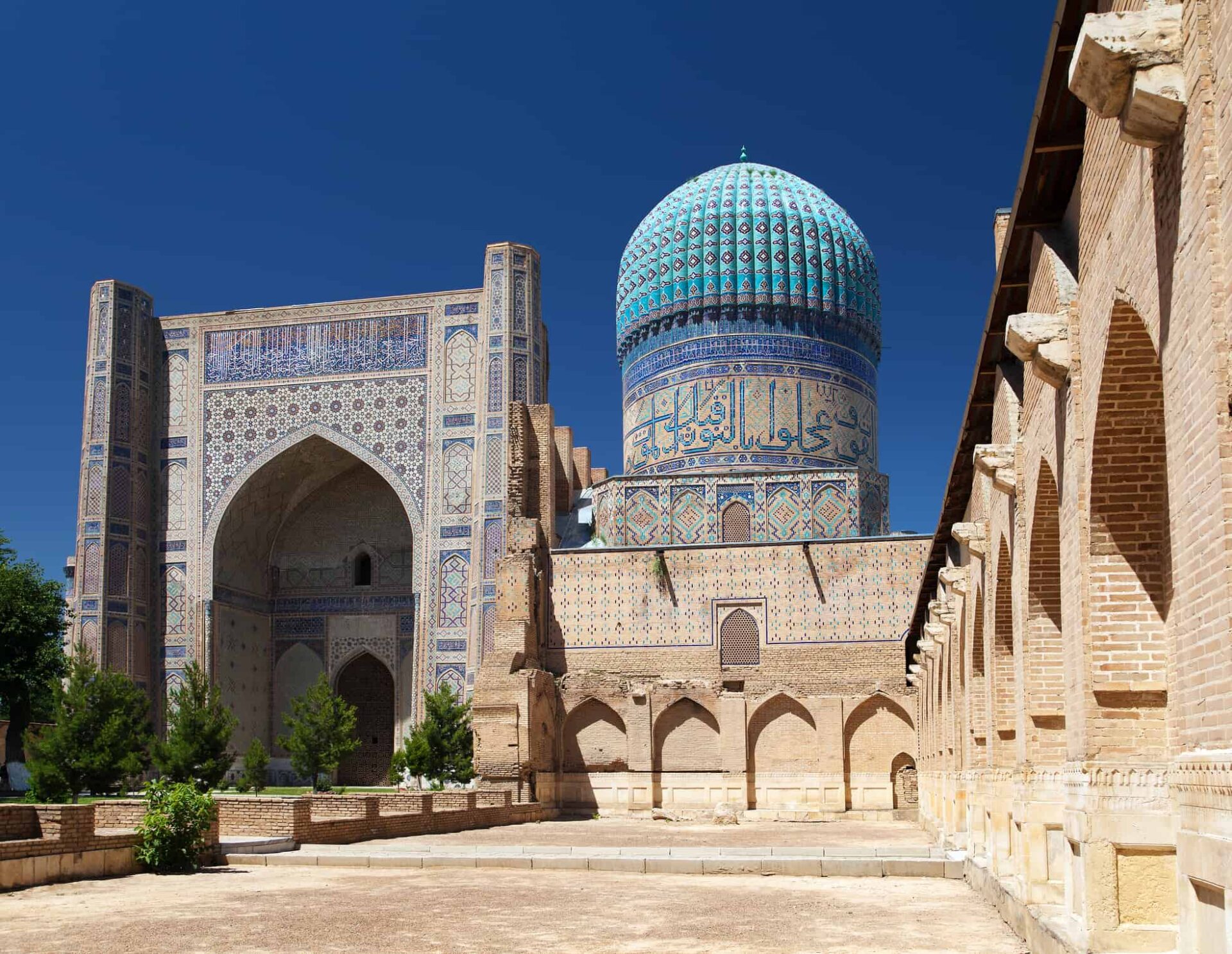By: Adkhamjon Janobiddinov
Bibi-Khanym Mosque is an architectural monument in Samarkand (1399-1404). The mosque was named in the honor of Amir Timur’s wife Bibi-Khanym (originally Saraimulk Khanym). It was built by the decree of Amir Timur after his successful campaign to India. The names of the masters and architects who built the mosque are unknown. However, the best master craftsmen of the era were involved in the construction work, including 200 hundred stonemasons brought from the conquered countries; 500 more workers were busy preparing the stone for the mosque in the mountains and delivered it to Samarkand. Around 100 elephants had been brought to the site from India to speed up the progress of the construction.
The size of the mosque courtyard is 63.8×76.0 m, and it is surrounded on four sides by arches and pediments. Its total area is 167×109 m, and there were high towers at the corners. It was gradually destroyed by earthquakes throughout the centuries. The foundation is made of stone, the walls are made of baked brick. In the center of the courtyard is a huge Lavh (Koran holder) made of marble stone, which was originally located inside the main building (in 1875, due to the danger of the collapse of the big dome, it was removed to the center of the courtyard). The tablet, decorated with elegant borders, muqarnas, plant-like patterns and inscriptions, was commissioned by Amir Timur’s grandson Ulugbek in the 15th century. In the Lavh, it was written as “Sultani Azim, the most respected ruler, the patron of religion, the guardian of the Hanafia, the noble sultan, the son of the sultan, faithful emir, Ulugbek Koragon.” The porch at the entrance to the mosque is majestic, with an 18.8 m wide arch in the middle. The towers on the sides are higher than the roof. A smaller (second) archway is located on the inner side of the roof. It had a gate with a carved marble frame. The year of construction of the mosque and the family tree of Amir Timur are written on the plaque above it. The main (mihrab) building of the mosque gives a complete picture of the architectural styles of Amir Timur’s era. Persian historian Ali Yazdi described it as “If there was no dome of the sky, the dome of the mosque would be the only one in the world” is not without reason. According to famous historian Ibn Arabshah, his contemporaries, who were amazed by the grandeur of the Jame Mosque, proudly exclaimed, “Our monuments will tell generations about who we are.”
1868 Bibi-Khanym mosque was badly damaged when Russian troops invaded Samarkand. Even though it is in ruins, the mosque has been attracting attention with the splendor of its architectural forms and the elegance of its decorations. After the independence of Uzbekistan, the first President of the Republic of Uzbekistan, Islam Karimov paid special attention to the restoration of the Bibi-Khanym Jame Mosque, along with other architectural monuments of our past. Today also, various projects are being done to preserve these historical monuments.
